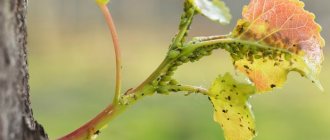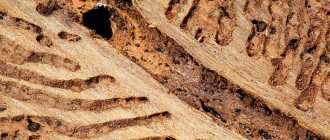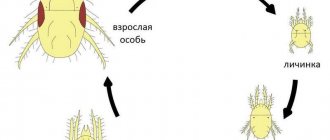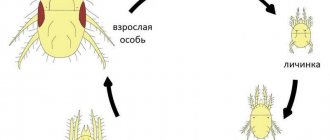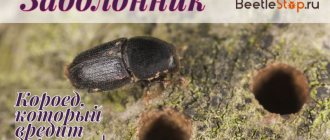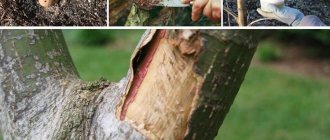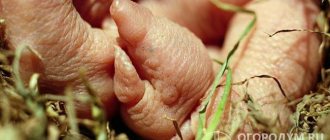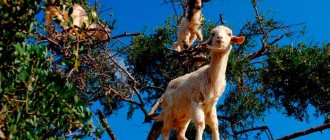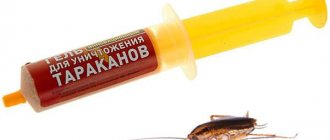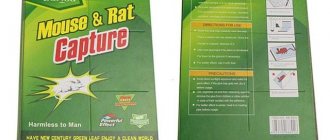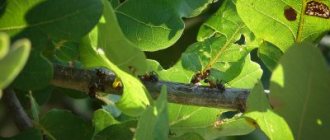Bark beetle infestation poses a great danger to an orchard. The apple tree in which the harmful larvae have settled is seriously injured. The beetle larvae gnaw through wood and sapwood, deprive the tree of juices, simultaneously infecting it with pathogenic fungi, and then mechanically destroy the trunk. An exhausted tree stops growing, loses its harvest, and if the pest is not neutralized in time, it eventually dies. Every gardener needs to know how to deal with bark beetle on apple and pear trees, and what preventive measures will help maintain a healthy garden.
Bark beetle - what does it eat and how to distinguish it?
The bark beetle has different names, including the apple beetle, the shawl beetle, the sapwood beetle, and the wood borer. The insect has an excellent sense of smell, so it can detect trees in the garden as sources of food from a distance.
Once on a tree, the female beetle actively gnaws through the bark, leaving behind a string of tunnels with laid eggs. Simultaneously with the damage to the bark, the insect infects the tree with spores of the fungus Monilia Candida, which begin to multiply. Larvae soon emerge from the eggs - they continue to spoil the bark, increasing the number and width of the passages, actively sucking out the juice, and eating tissue.
The longer the larva eats the tree, the more it weakens and, if no action is taken, it dies over time.
As soon as the mating period begins, the beetles leave the trees, moving to new ones. One parent and two sister generations of insects develop per season. The more favorable the conditions for the development of beetles, the more actively they will multiply in the garden and the more difficult it will be to achieve a positive result, even if you regularly treat apple trees for worms, as well as a number of fruit trees with special preparations and tinctures according to folk recipes.
Danger of infection
Fruit sapwood is attracted by the smell of freshly cut wood. They gather in places where there are branches and stumps that have not been removed from the garden. Fresh cuts and wounds on the surface of apple trees and other fruit plants are also at risk.
Infestation with bark beetles has the following negative consequences:
- damage to the tree's power supply system;
- disruption of the circulation of juices due to passages gnawed by the larvae;
- introduction of fungal infections by females into the thickness of apple trees, which soon begin to progress;
- death of the tree.
Traces of a bark beetle on a tree - how to detect?
It is not difficult to determine that pests have settled on a tree. Typically, the insect targets weakened plants. It is on such trees that beetles make their nest, without attracting attention to themselves and without wasting energy on damaging healthy hard wood. Therefore, first of all, weakened plants should be inspected for the presence of insects.
Round and oval holes can be seen on the trunks of affected trees. Such traces will mean that the worms have settled in the tree trunk a long time ago. A woodpecker constantly working on a tree can also be considered a sign of defeat. Most often, the bird hunts for the bark beetle.
Sawdust, which insects throw out of the trunk, forming passages under the bark, can also be considered a sign of infection. Based on the color of the sawdust, you can determine the level of damage to the tree: brown - the bark beetle did not have time to penetrate deep under the bark, white - spraying and any other treatment will most likely not give results, since the insects managed to get too deep.
The most common mistakes gardeners make
Above, we looked at how to overcome the bark beetle and what medications will help you. However, our article will not be complete without listing the most common mistakes made by summer residents, as a result of which the bark beetle attacks.
As a rule, if you have this individual in your front garden, then you probably made the following mistakes in care:
- improperly organized care;
- ignoring the manifestation of cracks in the bark and the resulting frost holes;
- in the spring after pruning the plants, the trimmed areas are not properly processed;
- lack of timely pruning;
- ignoring autumn garden cleaning.
If you do not take care of your crops and do not follow the simplest rules of care, then there is a high probability that pests will comfortably settle in your garden. The fact is that bark beetles can destroy an orchard over the summer. For this reason, try to perform the following preventive measures:
- form the crop crown correctly;
- carry out autumn treatment and remove weeds from the front garden;
- regularly carry out preventive treatments with insecticides;
- if a bark beetle has infected a tree, get rid of it immediately and burn the stumps;
- feed and water the apple trees;
- do not forget to whiten the trunks.
And lastly, if this individual has managed to colonize your garden en masse, the best option would be to seek help from the appropriate company, which will help destroy this parasite. Remember, bark beetles are capable of destroying trees in just a matter of days.
111
How to cure a tree at the initial stage?
If the bark beetle appeared on an apple, cherry or any other tree not so long ago, then you can try to solve the problem without the use of chemicals. There are several simple ways to improve the situation:
- Regularly inspect trees for affected areas that can be treated with chlorophos by burning waste from leaves and branches.
- Catch adult beetles by hand during their active period - in the spring.
- Lubricate tree trunks with oil paint or clay with manure.
- Construct beetle traps by placing thick tree branches around the perimeter of the garden for the females to lay eggs.
If the listed methods of control do not give the desired effect, you should immediately move on to more radical methods of extermination, using proven drugs. Below is a list of products that actually work.
Treatment
Before you start fighting the bark beetle, you need to carefully examine the trees in your garden. If the trunks are worn out with holes from which white sawdust is falling, the bark is separated from the wood, and there are many winding passages underneath - you will have to say goodbye to the tree: cut it down and burn it. This link will tell you what to do if mice have chewed the bark of an apple tree.
If the holes in the bark are sporadic and the wood flour is brown in color (the infection is shallow), you can still try to save the tree.
Spraying
A common practice for combating bark beetles is to spray trees after the trees have finished flowering, during the insect flight period. To carry out the procedure you must have:
- large, reliable sprayer (sprayers with a telescopic rod are convenient);
- workwear, gloves;
- a respirator to protect the respiratory tract from poisons (preferably gas-dust-proof models);
- mask or safety glasses.
The working solution of the drug is generously applied to the trunks and branches of apple, pear and other trees. Repeated treatment with insecticide is carried out after two weeks.
Remember safety precautions when processing the garden! Use medications only in the recommended dosage according to the instructions.
Insecticides
The drugs used to protect trees are systemic insecticides that can accumulate in plant tissues:
"Arrivo". The advantages of the drug are high efficiency and long-lasting action. The disadvantage is that the solution is toxic to pollinating insects and humans.
"Bitoxibacillin." Effective against adults and larvae, but does not affect eggs. The drug requires repeated treatments. Safe for bees and humans, does not accumulate in fruits.
"Calypso". The drug is fast-acting and produces a noticeable effect within a few hours. The action of the product is prolonged. Disadvantage: toxicity.
"Confidor Extra". A long-lasting product that is resistant to elevated temperatures and rinsing. Effective against pests at any stage. Low toxicity to humans and animals (hazard class III), but toxic to beneficial microorganisms (do not allow it to enter the soil). "Confidor Extra" is also used for stem injections into the tree.
"BI-58". An organophosphate preparation that acts in the intestines of the bark beetle. Low danger to humans (III hazard class). Disadvantage: the drug is toxic to bees.
Traps and repellers
A common method of garden protection is bark beetle traps and baits. In the spring, the branches cut down during pruning are laid out in piles away from the trees. The beetles are attracted by the smell of cut wood and flock to the bait to lay eggs. After the end of the beetles' summer (3-4 weeks), the branches are burned.
Mechanical collection of pests is carried out during their reproduction period - within 2-3 weeks after the apple trees bloom. Carefully inspect the trunks of apple trees and destroy any collected pests. Read here what to do if hares gnaw on an apple tree.
For private farmsteads, a more effective way to combat the bark beetle may be the use of antipheromones that repel the pest.
Antipheromone repellers are special tapes and tablets that emit an odor unpleasant to insects. They are safe for animals and humans. Antipheromone tablets are not sold in stores; they are used by specialist phytopathologists, and each type of beetle uses its own “aromatic” composition. The cost of such garden treatment is very high.
Pheromone traps cannot be used in a private garden - they will attract beetles from all over the area. They are used in large forestry enterprises to concentrate pests in a specific area and then destroy it.
Syringing
Using the injection method, you can save a tree at the beginning of beetle infestation - in the presence of brown sawdust and single flight holes, when the bark is not separated from the stem. Exterminators make injections into the tree trunk using professional devices.
Injection technique at home:
- A concentrated solution of the drug is prepared.
- The solution is poured into a volumetric syringe, then injected into the passages of the beetles.
- The holes are sealed with garden pitch.
The drugs used are Confidor, Chlorophos, Antizhuk, Karbofos, Tanrek, Calypso. The same insecticides must be sprayed on the apple tree and neighboring trees. After two weeks, the insecticide treatment is repeated.
Boosting immunity
Since the pest chooses weakened and oppressed trees, strengthening the immunity of fruit trees is an important task for the gardener in the fight against the beetle.
- Avoid unnecessary injury to the tree.
- Seal fresh cuts and tree fellings with garden varnish so as not to attract pests. This material will tell you how to cover the saw cut on an apple tree.
- Feed apple and pear trees in a timely manner. In hot and dry weather, trees must be provided with watering.
- Do not allow weeds to multiply, cultivate the soil in tree trunk circles.
Confidor Extra - features and application
The product “Confidor Extra” is a line of new generation drugs designed to combat various types of insects, including the bark beetle, which causes leaves to wither on trees and fruits to disappear.
The drug is produced in Germany, sold in the form of water-dispersible granules based on the active component - imidacloprid. The product is packaged in convenient 400 g bottles.
The effect of the drug begins only if it is consumed in accordance with the instructions.
The product is non-toxic and therefore does not pose a danger to people and pets. But as far as harm to the crops on the site is concerned, not everything is so smooth here. The drug is classified as hazard class 1 for beneficial microorganisms, therefore, when processing trees, it is recommended to use protective materials.
Confidor Extra is effective for several weeks and allows you to destroy larvae and adult beetles. The drug is considered universal, therefore it is suitable for combating a number of harmful insects in open ground.
Antibug Neomid
A product for controlling pests that damage the wood of buildings, structures and garden plantings. It affects not only bark beetles, but also other insects.
Advantages:
- preserves the integrity of the remains of the trunk;
- after that the surface can be painted, whitened or treated with fertilizers;
- penetrates to the core of the trunk, destroys accumulations of larvae;
- suitable for preventive spraying;
- houses are treated inside and out.
Flaws:
- contains ammonia, work in a respirator, headaches are possible after completion;
- It is recommended to ventilate the room for 4-6 hours.
Before application, clean the surface from dust, dirt and coatings that block the penetration of the composition (varnish, paint). Remove affected areas that cannot be restored. Cover the surface nearby with protective material; do not treat it.
Anti-bug is sold in concentrated form; to start working, dilute it with water in a ratio of 1:4. The affected area is covered with the composition, and the liquid is injected from a syringe into the grooves left by the bark beetle. Consumption 200-300 g per m2, apply to horizontal and vertical surfaces with a brush or synthetic roller. For prevention, 150-100 g is enough. Repeat the procedure 14 days after the initial treatment.
After the beetle chews through the tree, it begins to rot. The product acts as an antiseptic and blocks the formation of mold. Neomid destroys adult insects, their larvae, and prevents the emergence of a new population.
According to reviews, it has a specific but tolerable smell, dilutes well, and does not foam. It is applied quickly to a dry surface and is immediately absorbed. The action lasts for a season and wears off in 2-3 days. After treatment, beetles crawl out of the holes and die, more effective than folk remedies. Experienced gardeners advise applying it as a preventive measure to protect fruit trees.
Bi-58: what it consists of and how it works
Bi-58, a unique drug of its kind, will help fight bark beetles on apple trees and other trees with a fairly noticeable effect.
Just like the previous product, Bi-58 is produced in Germany, in the form of an emulsion concentrate. The product is packaged in canisters of varying volumes from one to ten liters. The main component is dimethoate. Considered safe for humans, but poses a serious threat to bees.
When beetles and larvae enter the stomach, the product has a negative effect on the intestines of insects, causing their death.
conclusions
- The fight against bark beetles is quite complex and requires the use of comprehensive measures: sanitary and hygienic care of plantings, strengthening the immunity of apple and pear trees, and preventive spring treatments with systemic drugs.
- A tree that has recently been infected can still be saved by injecting the beetle burrows with insecticides. Unfortunately, trees heavily damaged by bark beetle cannot be saved - they must be destroyed by burning.
- By following preventive measures, you can prevent your garden from becoming infected. Even little things are important for this: not leaving open cuts on trees, protectively coating the trunks with a clay-lime mixture, timely removal of diseased and dried branches. Every gardener is obliged to protect his garden from the insidious invasion of bark beetles.
Vitalizer NV-101 - a proven pest repellent
Vitalizer NV-101 is a complex designed to combat a number of pests and diseases of fruit trees, while promoting their active growth. The drug is produced in liquid form and in the form of granules, packaged in containers of different sizes. It is based on active extracts from pine, cedar, cypress and plantain. Helps protect trees from:
- harmful bugs;
- larvae;
- caterpillars;
- bacteria and fungi.
The obvious advantage of the drug is zero toxicity. This means that you can get rid of the bark beetle without any risk of infecting trees, poisoning bees, or harming the development of microorganisms in the soil.
An additional bonus is the ability of the product to improve the resistance of trees to difficult weather conditions with an increase in the ability to bear fruit in the future.
Prevention
To prevent sapwood from infecting apple trees and other fruit crops, you need to carry out all garden maintenance work on time and carefully. These include:
- autumn and spring pruning of dry and damaged branches;
- removal of dead wood, fallen leaves and weeds from the site;
- covering the cuts with garden glue or paint;
- looking after plants;
- maintaining the immunity and vitality of trees with phosphorus-potassium fertilizers and watering;
- preventive spraying with insecticidal and antifungal drugs in due time.
Clipper - guarding the health of fruit trees
The Russian-made Clipper product is also suitable for treating trees. Produced in the form of a concentrated emulsion in a 5-liter canister. The drug is based on the active substance bifethrin.
It is used against the bark beetle on fruit trees as an experiment, however, a positive result has already made itself felt in the process of treating plants in Russian nurseries.
The effect of the product lasts for several weeks. The drug can be used in parallel against the typograph bark beetle from the gnawing family, as well as weevils from the sucking group.
Prepare an emulsion that can save the tree, according to the instructions, observing the proportions. The prepared solution is used to spray damaged trees.
Why does the apple bark beetle attack at home?
Causes of bark beetle attack:
- Mostly diseased or weakened trees become prey for pests. It is a scientifically proven fact that beetles have a highly developed sense of smell. That is why insects can smell the trees they need at a fairly large distance (up to a kilometer). Trees growing next to buildings and to each other are weakened, as a result of which the root system cannot develop fully. In addition, various damage to trees of mechanical origin is dangerous - cracks, open cuts, etc.;
- However, there are frequent cases of bark beetle attacks on healthy trees, especially apple trees. Often the reason for this is untimely treatment of the tree that was damaged by the beetle. Thus, having “feasted” on one tree, the insect moves to the next one growing nearby;
- The presence of dead wood, stumps and mushrooms can also attract beetles to the site, since all this is an excellent habitat for the pest;
- In addition, beetles prefer trees that have been recently transplanted (within 1-2 years). The reason lies in the weakness of the tree, which has not yet had time to take root sufficiently;
- Carrying out insufficient, incorrect or untimely processing of the tree, as well as completely ignoring this procedure, can cause a beetle to attack the tree.
Senezh-Insa - a bark beetle remedy with a stable effect
An example of an excellent antiseptic is SenezhInsa, also made in Russia. The drug has been actively used since 2012 and is in demand both among professional agronomists and amateur summer residents. The product is completely colorless, packaged in small canisters of 5 liters or large barrels of 60 kg.
The concentrate is based on water, so when interacting with wood, its texture and color do not change.
The drug penetrates the tree bark, leaving the active components there. Non-toxic and effective. Helps get rid of different types of beetles and bacteria, regardless of the stages of their development.
Summarizing all of the above, we note that it is not enough to know how to cure a tree from bark beetle when insect damage has reached such a level that it is almost impossible to save the plant. In order for the garden to grow healthy and fruitful, you need to monitor the trees, preventing the appearance of pests and treating the trunks at the initial stages of infection.
We help develop immunity in the culture
The best and most effective way to protect trees is to develop immunity in them
It is important to understand that a healthy crop will have strong wood, due to which the bark beetle will avoid such a crop. After all, he is looking for a tree with soft wood, in which it is easier for him to survive and lay his own offspring
And to boost and strengthen your immune system, use tools such as:
- use the preparation nb 10, the granules of which are scattered around the tree and then watered with water;
- gum 30;
- phosphorus and potassium agents.
All these substances can strengthen the immune system of the apple crop and make it unstable to external negative factors.
Apple bark beetle (sapwood, gypsy, plum, wrinkled, shashel, woodborer).
A small dark brown beetle up to 4 mm long, the antennae and legs are red-brown. The larva is legless, white, with an eyeless head equipped with a pair of powerful brown jaws. The larvae spend their entire lives inside the wood, gnawing through long winding passages. They develop throughout the growing season, remaining to overwinter under the bark. In the spring, pupation occurs, and by the time the fruit trees finish flowering, young beetles appear, gnaw through the bark and crawl out. Insects scatter around to find a tree suitable for forming a new nest. The flight of insects lasts for 3-4 weeks. The pest primarily targets weakened and diseased trees. Female bark beetles gnaw passages under the bark to the sides of the main entrance. At the end of each turn, it lays up to 100 eggs. The emerging larva, feeding on wood and bast, gnaws through long passages, disrupting the tree's nutritional system. As a result, the plant does not receive enough nutrition, weakens, quickly withers and ultimately dies.
